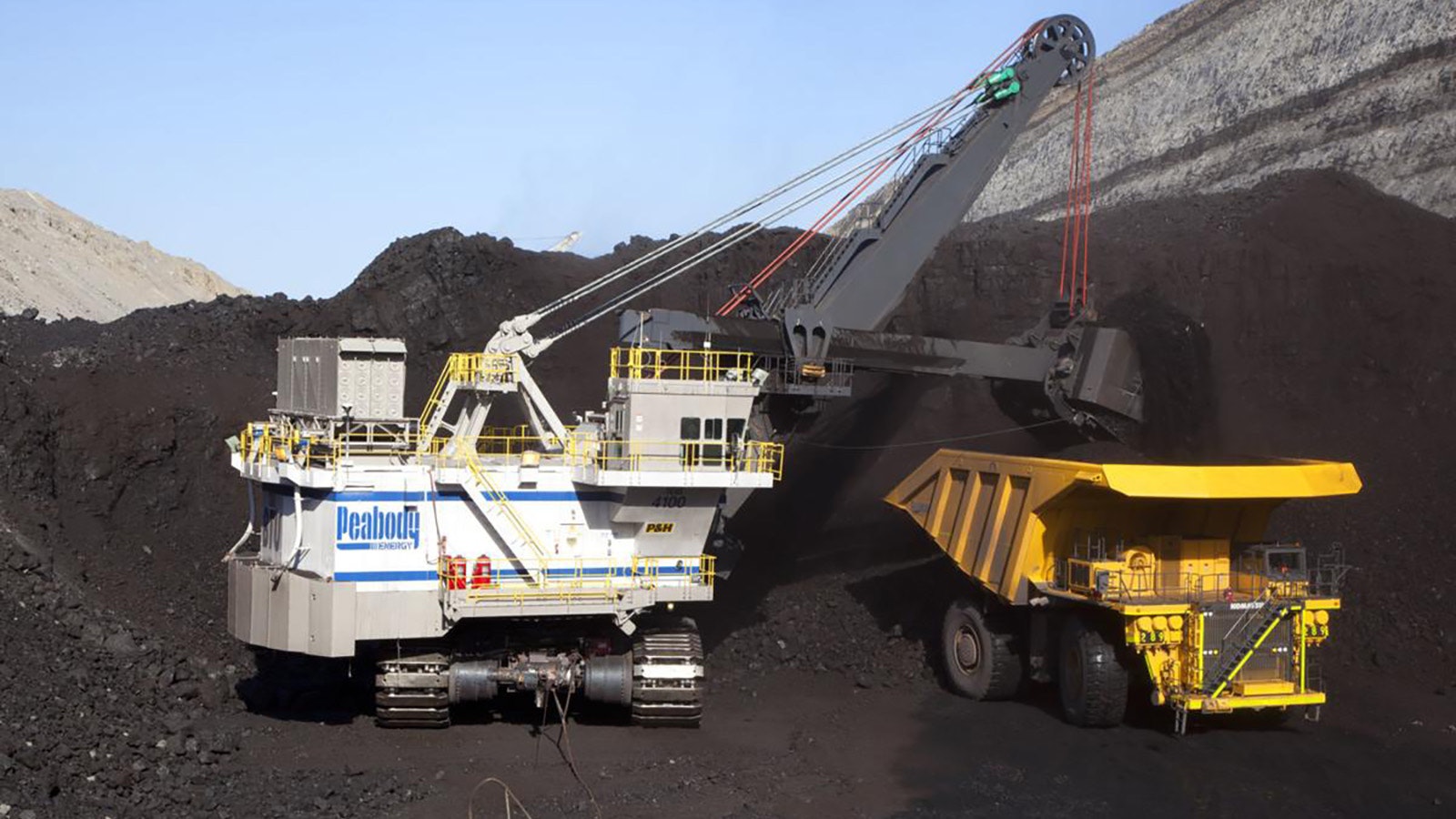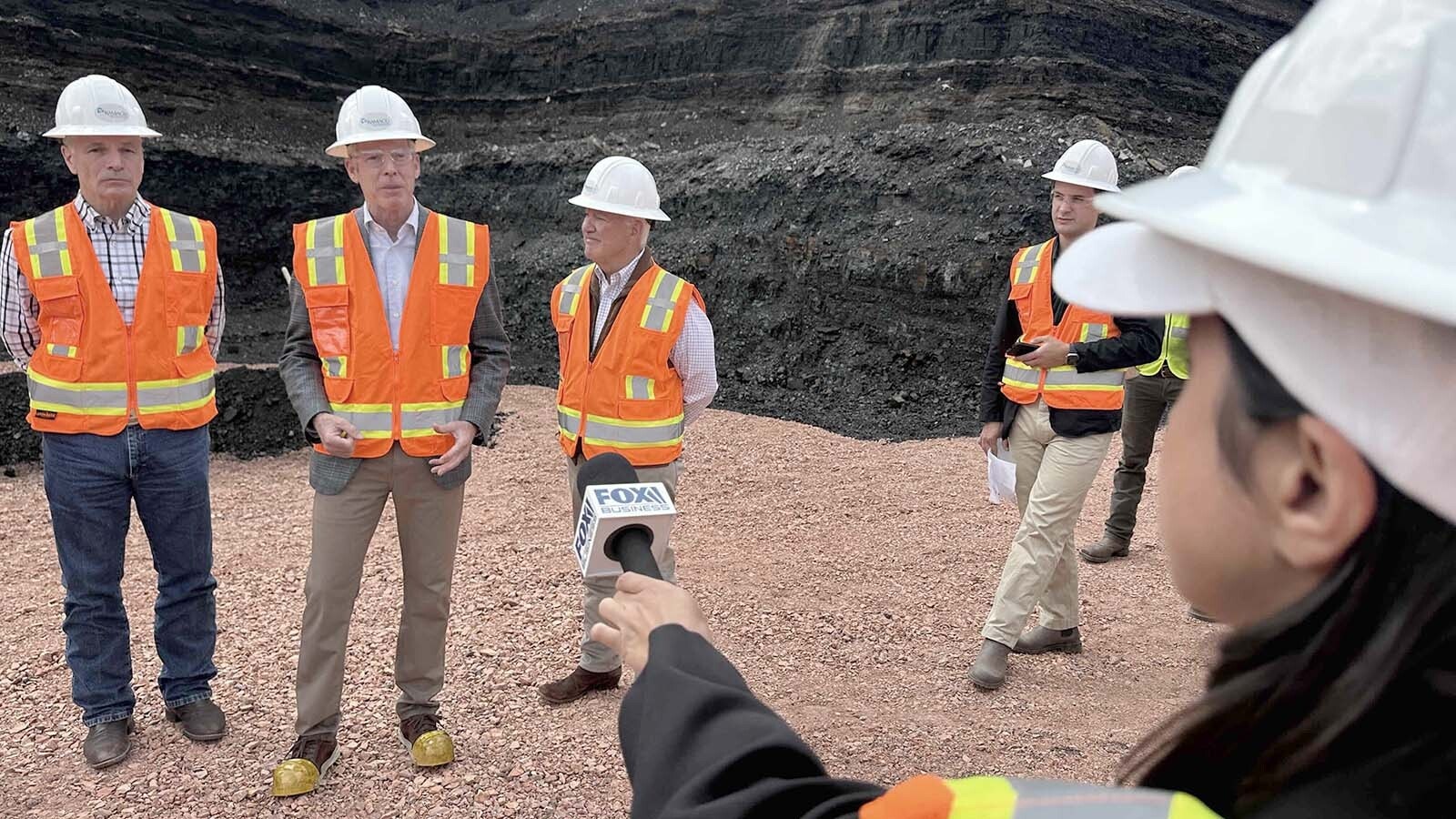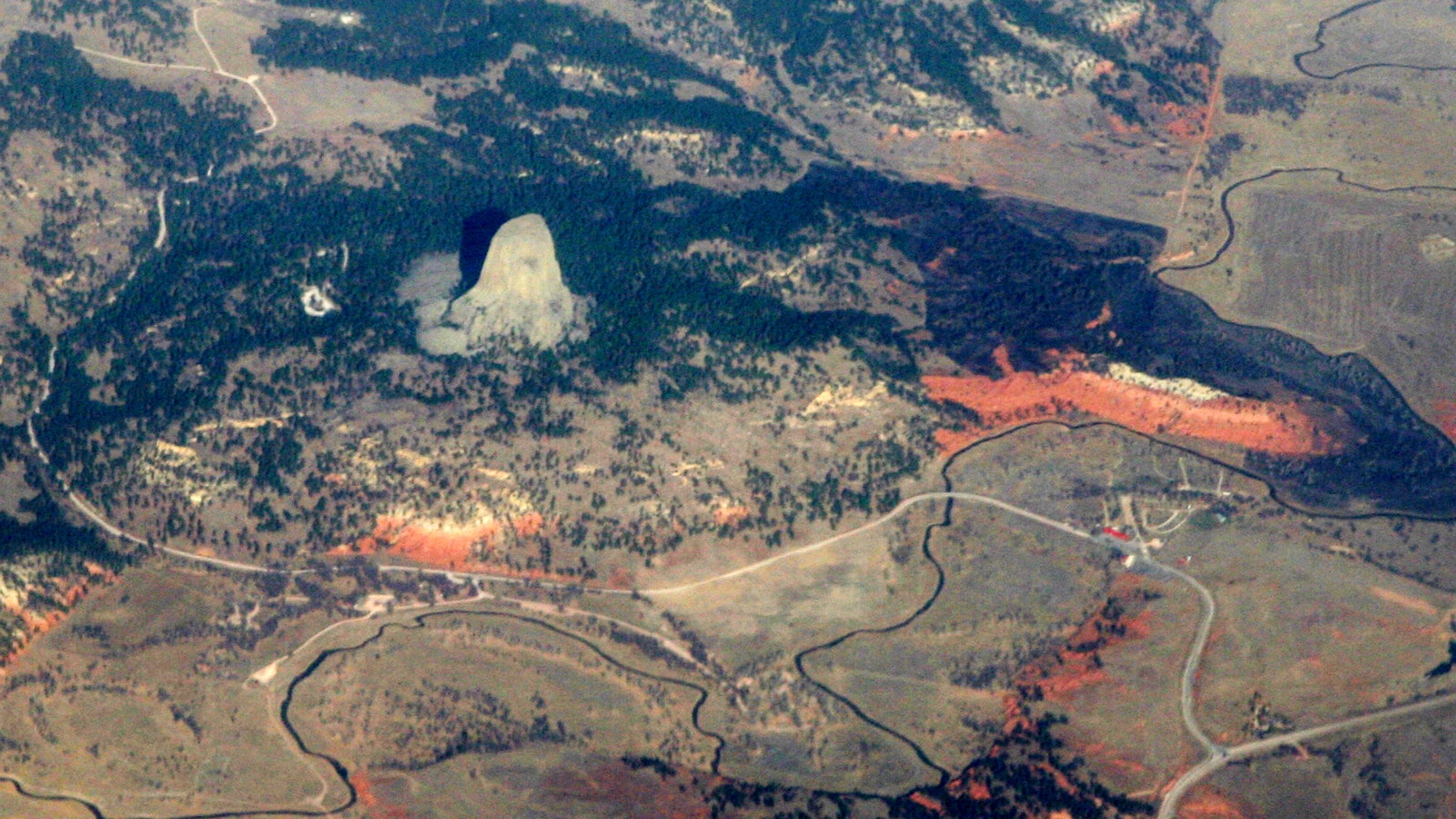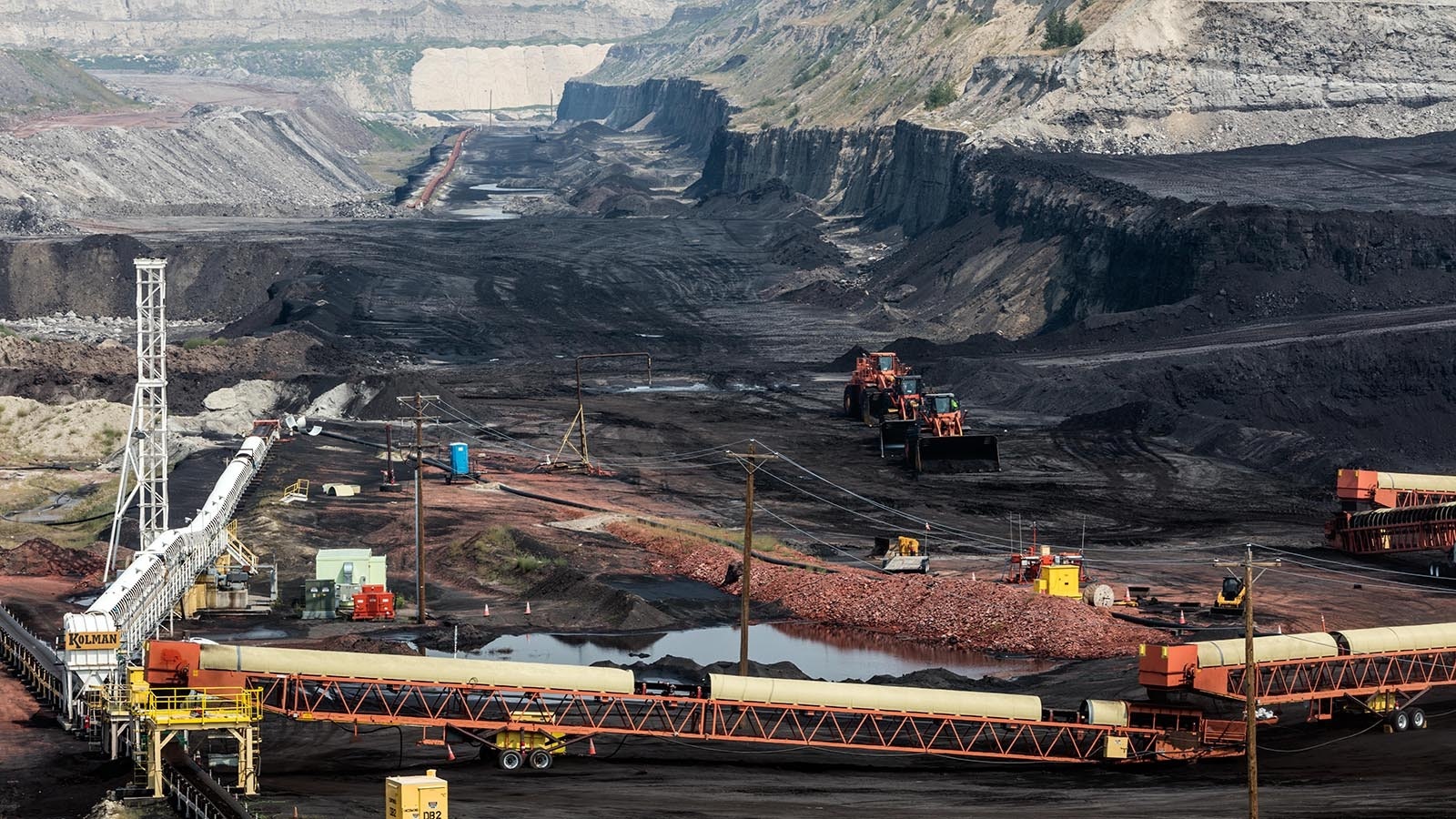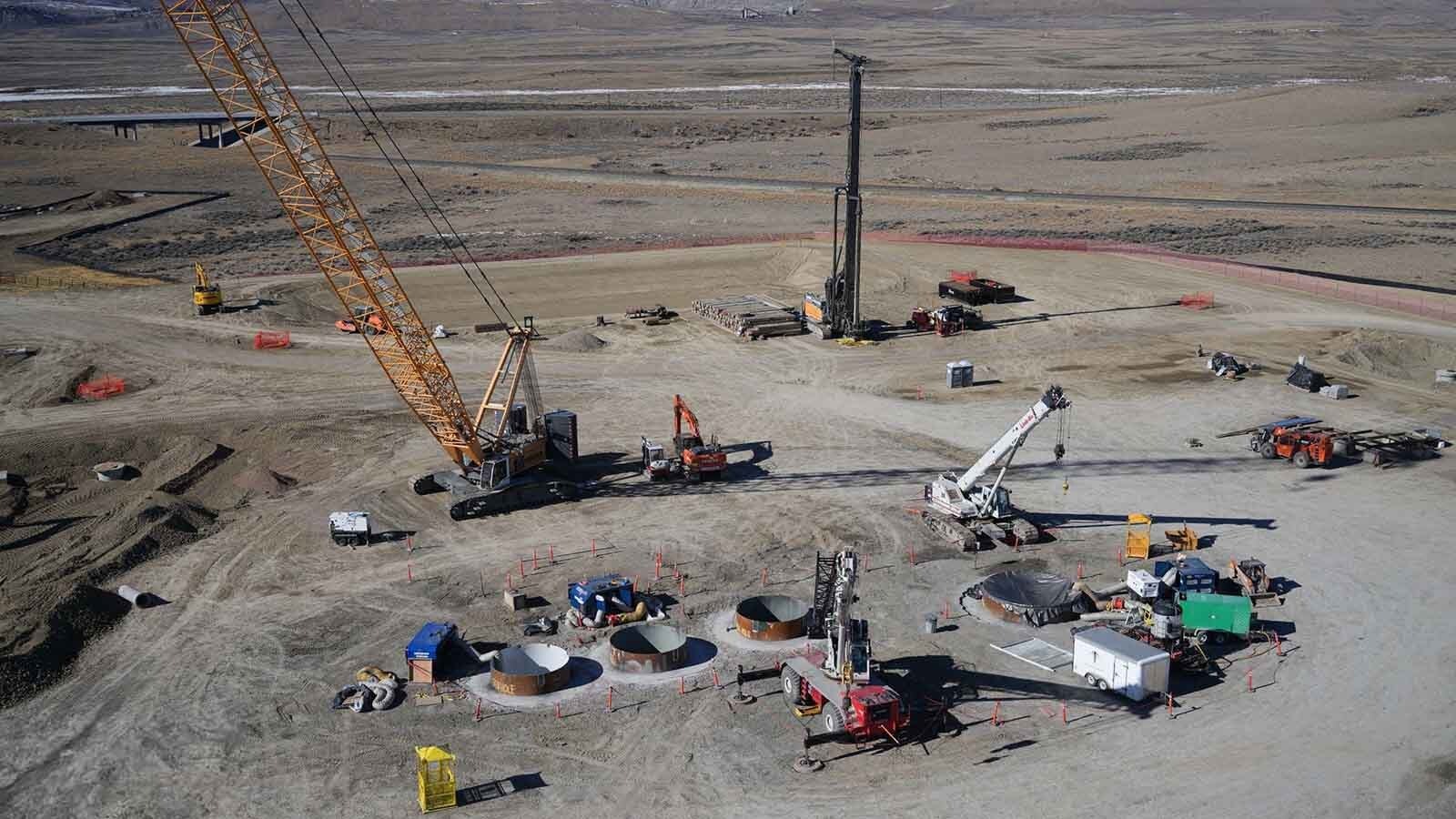St. Louis-based Peabody Energy Corp., which runs the world’s most productive coal mine in northeastern Wyoming, saw its profit slip 79% from a year ago as production in the region’s surface mining operations sunk to one of its lowest levels in a decade, the company reported Thursday.
The collapse in production wasn’t totally unexpected as Peabody Energy just a few weeks ago warned that its guidance targets for the first three months of 2024 would fall short of expectations on Wall Street.
On a call with Wall Street analysts Thursday, Peabody President and CEO Jim Grech said the quarter ended March 30 was negatively impacted by a mild winter with unseasonably lower-than-normal temperatures, along with depressed natural gas prices that are making the commodity more competitive than coal for burning in power plants.
“Our full year guidance assumes a normal summer and fall with customers meeting our commitments,” said Grech about the Wyoming outlook.
Peabody operates three mines in the Cowboy State’s coal-rich Powder River Basin, which is beginning to show steep declines in mining production, raising some questions by at least one influential economist with the University of Wyoming that projections for the state budget in the current fiscal year may not meet forecast targets.
Outlook Not So Good
The Peabody quarterly financial report released Thursday, coupled with a first quarter report by rival Arch Resources Inc. warning of layoffs in the Powder River Basin a week earlier and devastating federal environmental regulations that could mothball the nation’s fleet of coal-fired power plants in the next decade spells potential trouble ahead for the state’s coal severance taxes needed to fuel public schools in Wyoming and other infrastructure projects, the economist told Cowboy State Daily.
“Coal is declining, and coal is going to decline. The question is just how quickly,” said Robert Godby, the University of Wyoming director for Energy Economics and Public Policies Center, and who is one of the Cowboy State’s nine financial experts — called the Consensus Revenue Estimating Group (CREG) — who look at revenue estimates in Wyoming for planning purposes.
The last CREG estimate already reflected a lowered budget forecast due to a drop in commodity pricing for minerals due to lower trona and coal outputs.
Since the last CREG forecast in January, Godby said that he’d expect an even larger shortfall in severance tax revenues generated from coal production based on reports from Peabody, Arch and other energy-related entities.
“Along the way will be bumps, and occasionally it is possible where coal production is higher than the trend, but you also will have periods where you fall below the trend,” said Godby of the state’s coal industry, which saw a stark 21% drop in coal production in the first three months of the year as compared to a year ago.
In its 2024 first quarter, Peabody reported profit of $39.6 million on revenue of $983.6 million versus profit of $192 million on revenue of $1.2 billion in the same quarter of 2023.
On the call with Wall Street analysts, Grech expressed some worry over a recent rule issued by the U.S. Environmental Protection Agency that may force out many coal-fired plants in the next decade.
“We do believe though that the EPA has overstepped its authority granted to it by Congress and it’s threatening grid reliability at a time of increased energy demand,” Grech said.
The executive also indicated on the call that the EPA rule will face a “very swift and significant pushback in the U.S. court system.”
Grech cited more than 40 state attorneys general who have announced their intentions to fight the regulations, working with coal and mining trade groups to “support legal challenges.
“We expect to see court stays on this at some time this year,” he said of attempts to halt EPA’s implementation of the rules.
Grech declined a request from Cowboy State Daily to address the business climate in the Powder River Basin.
Wyoming Gov. Mark Gordon has directed Attorney General Bridget Hill to investigate forming a coalition of states to challenge the new EPA rules in court to halt the EPA’s efforts.
Ask Again Later
In its first quarter report, Peabody doesn’t forecast an immediate turnaround for its Powder River Basin mines — though Grech said on the call that he was cautiously optimistic that one may come in the second half of 2024.
Still, Peabody’s guidance on production out of the region is the worse in more than a decade, according to the Peabody’s projections and data provided by the Wyoming State Geological Survey (WSGS) earlier in the week.
In its second quarter ending June 30, Peabody said Thursday that it expects 15.5 million tons to come out of the Powder River Basin at an average price of $13.80 per ton. That’s the lowest forecast for production in over a decade.
Peabody coal output from the coal heartland in Wyoming isn't improving.
The largest of Peabody’s mines, North Antelope Rochelle and the largest coal producer in the world, saw 13.4 million tons produced in the first quarter, its lowest in a decade, according to first quarter WSGS data.
Production fell over 17% to 13.4 million tons of coal produced in the quarter from the same year-ago quarter when it dug up 16.2 million tons.
The highest volume ever produced during a first quarter at the North Antelope Rochelle mine came in 2015 when it pulled 30.2 million tons out of the ground. That was when America was grinding out a return to economic normalcy following the Great Recession back in 2008 and 2009 after a mortgage and financial crisis rippled throughout the nation.
In all of 2015, Peabody’s coal production in Wyoming’s coal stronghold was in line with the most coal that was ever pulled out of the mine on an annualized basis. In that year, 109.3 million tons was dug up from the North Antelope Rochelle mine coming off an all-time record of 118 million tons for the mine.
Peabody’s other mines in the Powder River Basin displayed similar performance in the first quarter, according to Peabody and WSGS data.
Peabody’s Caballo mine produced 2.826 million tons in the first quarter, down 17% from 3.4 million produced a year ago. It’s the lowest in production out of Caballo since the first quarter of 2019 when it saw 2.7 million tons produced.
The least amount of coal produced out of Caballo in the past decade came in 2014 with 1.7 million tons.
Peabody’s Rawhide mine is the lone bright spot.
Production picked up to 2.5 million tons in the quarter, up 8% from 2.3 million tons in the same year-ago period, but down 35% from 3.9 million tons seen at its highest level of production back in the first quarter of 2015.
Pat Maio can be reached at pat@cowboystatedaily.com.

